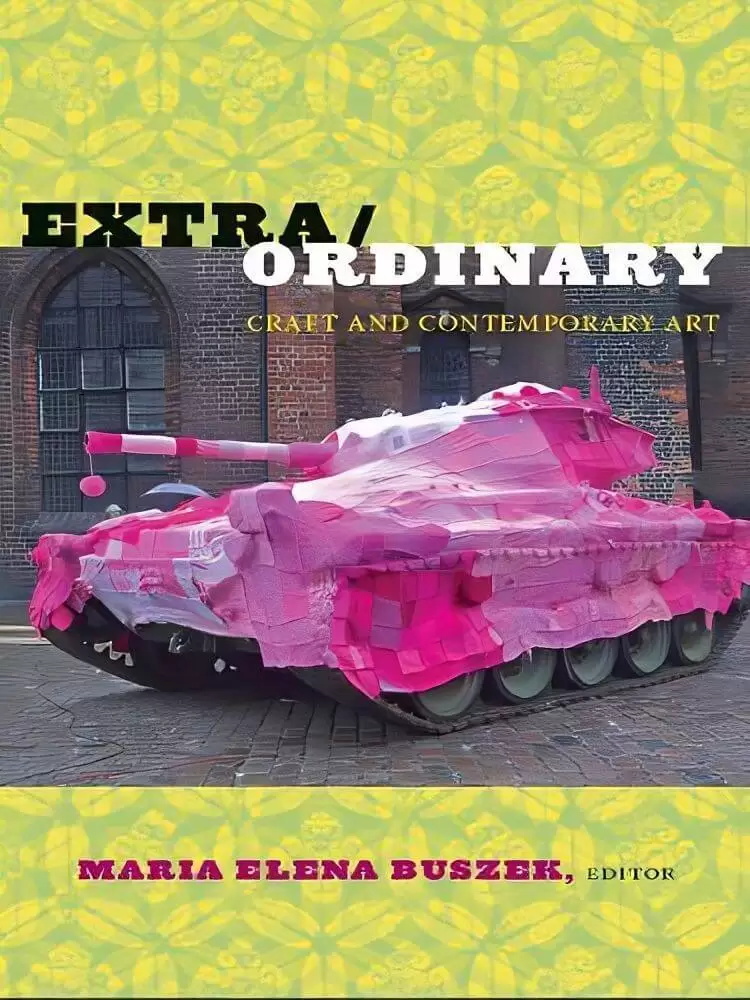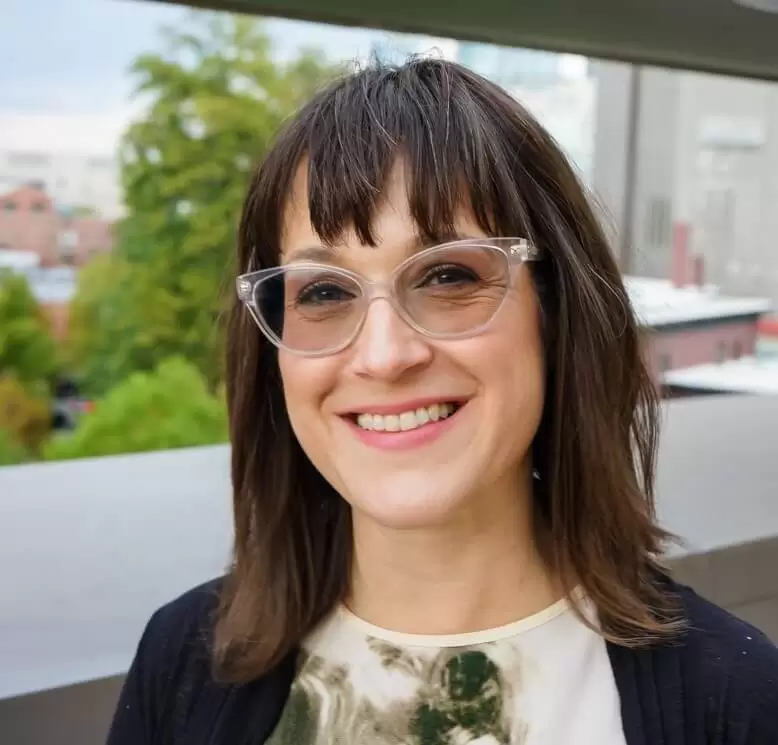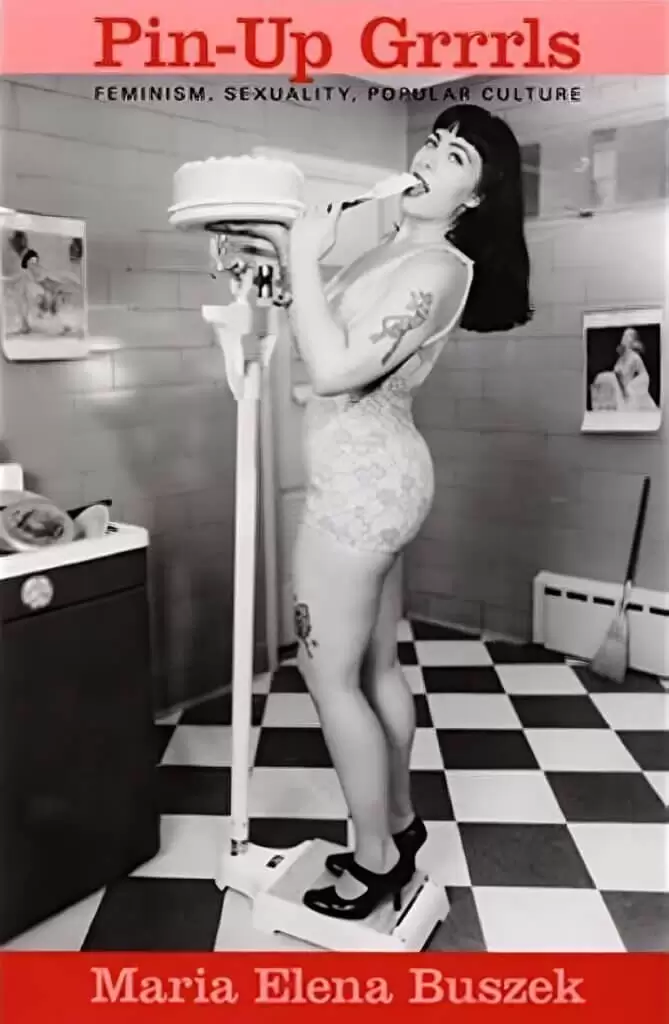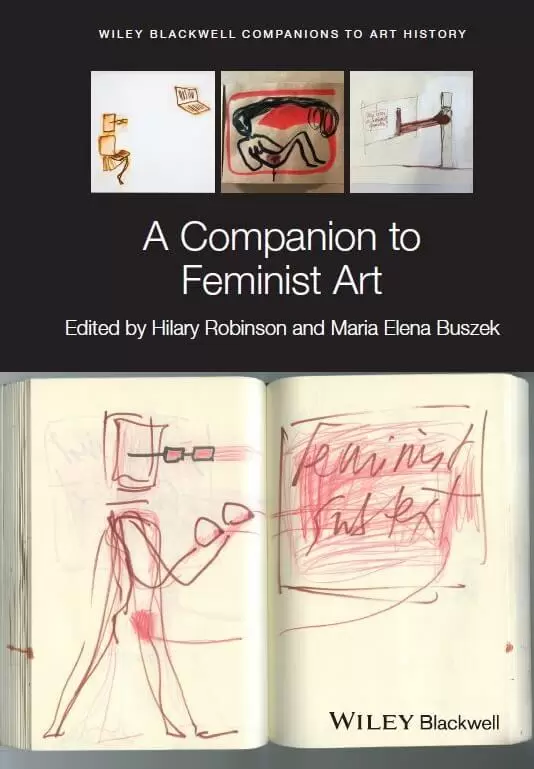Maria Elena Buszek, PhD is a highly accomplished scholar, author, critic, curator, and Professor of Art History at the University of Colorado Denver, where she teaches Modern and Contemporary art and design. Buszek discovered her passion for art history through punk music. Originally from Detroit, Michigan, she earned her PhD from the University of Kansas; Buszek has worked at renowned institutions such as the Museum of Modern Art in New York and the Los Angeles County Museum of Art.
I am an art historian who works on Modern and contemporary art, with a focus on activist art.
Maria Elena Buszek
Buszek is an authority on feminist art, popular culture, gender, and sexuality. She has written and contributed to numerous books and articles, providing new ideas and perspectives. Make her one of the most sought-after experts in this domain for her mastery of research and extensive knowledge.
Buszek’s focus on activist art is evident in her latest undertaking, “Sensitive Content“, at Unit London. She collaborates with art historian Alayo Akinkugbe and artist/curator Helen Beard on this collaborative curation project. The exhibition is focused on artists who have been censored for their feminist, anti-racist, or queer content. Censorship is a major issue for these artists, and protest is a significant part of their practice. The exhibition features work from Pussy Riot, Helen Beard, Betty Tompkins, Renee Cox, Xiao Lu, Renate Bertlman and more.
We caught up with Buszek during Sensitive Content to learn more about the exhibition, her research methods and her curatorial approach.
Sensitive Content is on at Unit London until 16 October 2022
Hi Maria! How are you doing? Thank you for taking the time to speak with us. Can you please introduce yourself for those who do not know you?
A: I am an art historian who works on Modern and contemporary art, with a focus on activist art. But I am also interested in “art in everyday life,” so a lot of my research is about ways that the fine arts are intertwined with popular culture, from pin-ups to punk rock.
Q: You are a professor of art history at the University of Colorado Denver and an independent curator. Can you tell us how you started in the arts, how art has played a role in your life, and why you decided to work in the arts?
A: I didn’t grow up in a museum-going family: I grew up pretty working-class in the American Midwest. But my dad is a musician and a record collector, so I feel like I had a pretty holistic arts education by way of music: I was in a band with one of my brothers and worked in record stores and radio stations, and these are all contexts where you had to study and really know about the arts, past and present, even if you were learning relatively informally—especially if you were a woman, where even as a kid, I learned pretty quick that I had to be twice as knowledgeable as the men around me to be perceived as half as smart.
So, in music circles, where everyone is always reading the liner notes and the magazines, I kind of sorted out the fundamentals of arts research. And, since this was in the 80s and 90s, there was already a lot of interconnected visual, performing, and musical arts. So, when I started college and took my first art history classes, I felt like it was an extension of what I already loved as a music fan: Patti Smith, Grace Jones, Lydia Lunch and Ann Magnuson were my heroes, and already working in big, artsy scenes, and art history is just so organically interdisciplinary.
I felt like it helped me expand outward to the broader cultures around them. And, really, ever since I started studying art history, I’ve been interested in writing about these kinds of “big-picture” creative communities—in my first book, Pin-Up Grrrls, about 150 years worth of them!
Q: Could you tell us more about your lectures and what specific topics in art history you focus on? Also, how do you approach students who are interested in research, especially when it comes to complex or sensitive topics?
A: In some ways, I teach surprisingly conventional art-historical classes: the Art History program at CU Denver is pretty small, so what art historians we do need to cover the broadest bases for our students. So, I tend to teach big surveys like Modernist Art, Contemporary Art, and History of Modern Design. That said, in all these classes, we inevitably get into sensitive topics: I mean, it’s hard not to when you are teaching visual culture from pretty much the Industrial Revolution to the present!
Folks usually think that just means issues around gender, sexuality, religion, and race—which I definitely teach, as so much art since the 19th century addresses all those things! But, I’ve found that my students are really excited to have nuanced conversations around those issues, and I pride myself on creating a pretty safe, open space for them, even when things get tense. I teach at an urban, state university, so my students come from all walks of life and are neither coddled nor confrontation-avoidant.
However, when folks who don’t really know anything about college students come at me with “Oh, it must suck to teach these snowflakes who need content warnings,” or have some ridiculous stereotype of the “woke” co-ed, I have to help them to the fact that the students who ask me for these are, almost exclusively, military veterans who need a heads-up around images of war and war-wounded because they are negotiating PTSD and traumatic brain injury. If I am teaching World War I, for example, I really can’t teach things like Futurism, Dada, and Surrealism without literally getting into the trenches, and I don’t mind letting people know that’s on for the day before we start. But, I’ve never had a student walkout, and very few who engage in anything but good faith with any kind of potentially sensitive topics.
Q: As lecturer what compels you to curate art exhibitions, and how do you balance projects and research with your teaching responsibilities?
A: It’s difficult mostly because when I’m teaching, I can’t help but want to give my classes 100%, which means that a lot of my research gets put on the back burner until the summer break or I pick away at it when I’m not working on or teaching my classes or mentoring students. And I have adolescent kids, too, who throw in a whole other set of responsibilities to balance! Curatorial work is extra challenging because it often requires that I go back and forth to the site as things are being planned and hung, which my full-time teaching schedule can make challenging—especially when the exhibition is out of the country.
In the case of Sensitive Content, though, I was really grateful to be sharing the curatorial responsibilities with Helen and Alayo, who were “on-site” in the UK and did the lion’s share of the on-the-ground work.
More broadly, though, I am lucky that I have never had a research project that I haven’t been completely in love with! And that makes a massive difference in how things get done: it can be very time- and effort-consuming to organize a show or write a book or a peer-reviewed article, but when I find so much joy in the art, histories, and politics of the work I am focusing on, it is truly a pleasure. I mean, I spent last summer mostly digging around in punk-era ‘zines and music weeklies for my current book project on feminist art and popular music—how was that not going to be an utter delight? They had to pretty much close down the archives around me every night!
Q: You have written books, given lectures, and written articles on topics from feminist art, popular culture, gender, and sexuality to craft which provide new ideas and perspectives on these topics that some people might see as taboo. Can you tell us more about these books, their significance, and how you prepare and conduct your research before starting a book project?
A: You know, in some ways, my research projects are all over the place, but about a decade ago, I had to give a talk where I was asked to “summarize” my research, and the only thing that I could think to do was to draw upon a famous book about craft by David Pye, in which he draws a distinction between what he calls “the workmanship of certainty”—which is what most practitioners feel they must focus on to master their craft—and “the workmanship of risk”—which requires that you accept uncertainty and risk failure. But this is the place where progress—and, indeed, new modes of “mastery”—happen. And it occurred to me that I keep being drawn to what I would call a “scholarship of risk.” Not that I pretend to be groundbreaking in any way—in fact, in so many ways, I am a very old-fashioned historian, just digging around in the archives looking for new information!
But I have always found myself frustrated by how the field of art history determines what doesn’t “count” as art and has disappeared from cultural history based on unspoken issues of class, gender, and race that I really feel responsible for confronting.
I suppose I “prepare” differently for every project, but it always begins in the library! If I have an idea for a project, I have to make sure that no one else has done it yet, or if they have, if I can see ways into it differently. Since I mostly work on living artists these days, interviews are really important, as no scholar is going to give you a better perspective than the folks who were there!
Yet, people have their agendas and beefs, and so I still have to cross-check everything in the record: primary sources like period publications are really important in that regard, even though they can be the hardest to find. But, that’s my favourite part of my work: I love immersing myself in the writing and ephemera of the periods I am writing about, whether that’s National Police Gazette from the 19th century or artists’ social media in the present.
Q: You are currently working on a new book project, “Art of Noise: Feminist Art and Popular Music Since 1977.” which has received a grant. Can you tell us how the process is going and what you have discovering about the topic?
A: The process is creeping along! This is definitely a project where I am reliant upon interviews with the artists themselves, most of whom are alive and still making amazing work. But it can be hard to find and then schedule time to interview these folks, and a lot of the reason I want to talk to these women is because they’ve disappeared from the histories of punk, post-punk, and hip-hop.
But sometimes when you’ve been burned for so long by the art world or the music industry, you get suspicious about anyone who wants to talk to you, so I’m not always successful in trying to convince folks of my intentions, which can be a bummer.
I’m just grateful that any of them get on my radar so that I can, at the very least, ferret out writing about or interviews with them in the past. It’s really important that I am doing justice to these artists’ work and influence!
And honestly, what I am finding in the archive is remarkable! The evidence of how profoundly women artists, musicians and writers contributed to their own scenes in the punk and post-punk eras is abundant in any copy of, say, Melody Maker or NME from the late 1970s or 1980s—so what I am really “discovering” is the extent to which I am not “adding” these feminist artists to the record, but am simply recovering them after having been disappeared by critics, journalists, and historians in the years since.

Maria Elena Buszek
Q: Sensitive Content at Unit London explores the work of artists who have all faced censorship in their careers and examines the courageous ways they have resolved to create work from nuanced perspectives on sex, beauty and politics, despite censorship. You co-curated this exhibition alongside art historian Alayo Akinkugbe and artist and curator Helen Beard. Can you tell us more about the exhibition, your curatorial approach, and what it was like working with Alayo and Helen?
A: It was so gratifying to work with Helen and Alayo! Helen’s invitation to co-curate the show with them came from totally out of the blue, but was obviously coming from a really sincere place: Helen has personally been censored by social media platforms for her art, and Alayo’s @ablackhistoryofart Instagram was created specifically because of the overt and covert censorship on artists of colour throughout history. So, right away, I knew we would probably be excellent collaborators.
We spent several months brainstorming a “wish list” of artists we wanted to include, but we also knew that Unit is a relatively small space for such a huge topic, and right away, we started refining what kinds of censored voices we wanted to focus on. Since there is such a huge group of privileged folks crying “censorship” right now because their hate speech or misinformation are being challenged. We were very quick to agree that we wanted to spotlight marginalized artists who were, rather, censored for being too honest: about their lives or histories, which are censored because they diverge from comfortable narratives.
That led us to the final lists of artists we included, who wound up being (perhaps unsurprisingly) all women and artists of colour. I was also grateful that–besides our working together so beautifully “virtually,” as we planned the show on e-mail, Zoom, and WhatsApp—I was able to spend some time in London archives this summer for my grant and finally got to spend some time at Unit as well as meet Helen and Alayo in person, while we sorted out our thoughts on how the show would be hung weeks before the work actually arrived. And, when it began arriving after I’d returned to the States, Alayo and Helen were sending me photos and videos of the installation as it happened—which was a bit slapstick but came together in the end.
I would get up at 5:30 in the morning in Denver to a slate of WhatsApp videos from the two of them, like, just back from lunch and asking for thoughts on how we could squeeze one more thing onto that already-full east wall. It was hysterical, but somehow it worked!
Q: Censorship is a huge issue for artists and curators. It can be challenging for artists and curators to explore controversial themes and concepts, particularly in the digital domain. Do you think enough is being done to protect freedom of expression, especially on digital platforms, and what do you think needs to change?
A: That is a question for Helen and Alayo! As I joked throughout the process, I was pretty much the “old media” curator for this project!
Q: In your opinion, what do you believe are the most crucial elements of being a curator, and do you have any advice for people who wish to pursue a career as a curator?
A: You know, I am probably a terrible person to answer this question because while I came to academia out of the museum and gallery world. I very much chose to leave full-time curating to be an educator because I love teaching so much and mostly spent my early curatorial opportunities (even at amazing places like MoMA and LACMA!) missing being in the classroom. Every other curatorial gig I have had since then have been something that I took on as a labour of love but in no ways as a calculating career move!
That said, falling back-ass-wards into the curatorial gigs that I have had, I will say that maybe just my willingness to be both open to adventures—in fancy curatorial gigs that I probably should have been terrified of taking and DIY shows I took on as a lark alike—has really suited me well. I have, obviously, also been open to art-historical work across a whole spectrum of practices rather than digging my heels into either a “curatorial track” or an “academic track.”
Part of this was curiosity, and part of it was practicality: I don’t come from any kind of money, and so have always had to just take the paying jobs I was offered, and there are always more decent jobs in curatorial work than academia. My professors in grad school assured me this would make me look unserious, but in my experience has only made me more interesting and hirable as both a curator and an educator. So, I guess my only “advice” would be to fuck the haters: do what you need and ideally, what you like.
Q: Are there any artists and their work that has caught your eye over the last year?
A: I’ve been fangirling on Nikita Gale for the last five years or so. To my mind, she is the complete artist: her work is deeply researched, wildly varied, politically charged, and always beautiful.
I was over the moon that she could be in my exhibition on sound art, Inner Ear Vision, in 2019—mostly because she is always so restless and busy that I was thrilled she could take part—and then discovered how gracious and generous she is as a collaborator, to boot.
In fact, my co-curator for that show, Raven Chacon, is doing pretty well for himself these days! Besides having a really poignant piece about Indigenous land and resistance in the last Whitney Biennial, he just won a Pulitzer Prize in Music. Moreover, he is metal AF as well as a Bee Gees fan. Needless to say, another complete artist in my book.
Q: What’s next for you as a curator and lecturer?
A: I’m just trying to survive grading my students’ midterms! But, I am excited to be headed to London for Frieze Week and, finally, see my Sensitive Content show in-person with my co-curators in its last week.
Q: Lastly, what does art mean to you?
A: https://www.youtube.com/watch?v=u9z0bUK-gQk
©2022 Maria Elena Buszek, Emily Owens








